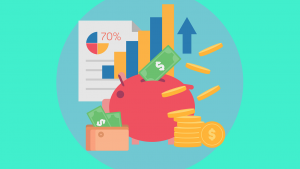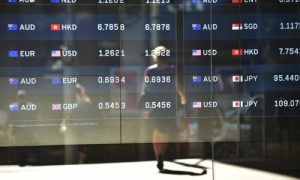- TYPES OF DERIVATIVES
Once you have decided what market you want to trade, you will need to decide upon the vehicle through which you want to do this. When you need a vehicle to enter the markets, there are a wide variety of products. Mostly different types of derivatives, from which you can choose. Derivatives are so-called because […]
- TYPES OF FINANCIAL INSTRUMENTS
Almost anything with a liquid price, from shares in a new company to soybean meal, from raw aluminium to Patagonian currency (whatever that is!), is probably trade-able somewhere in the world, through some vehicle, on some exchange. With so many types of financial instruments on offer, how do you set about deciding exactly what to […]
- THREE TYPES OF MARKET TRENDS
The price of an instrument will always move in one of three ways – upwards, downwards, or sideways. These 3 types of market trends are easy to recognise on a chart of historical price action. Although, tracking the market movements and recognising market trends as they unfold can be tricky! Uptrend Market Trend In an […]
- FOREX BROKER – HOW TO CHOOSE?
In order to begin trading, you will need to find a forex broker. The job of the forex broker is to connect you to an underlying market that you wouldn’t otherwise be able to access. This way you can transact your trades there. Your choice of broker is extremely important. Make sure you take the […]
- WANT TO START TRADING FOREX?
Before you make the decision to start trading forex you should have a clear understanding of what it is and how it works. Forex stands for foreign exchange and is the world’s largest financial market in terms of trading volumes. Forex trading is worth trillions of dollars and is taking place every single day. In […]
- THE MECHANICS OF SUPPLY AND DEMAND
Most things we buy from day to day have a relatively fixed price, at least in the short term. If you walk into a newsagent and begin to bargain over the price of a chocolate bar, the shopkeeper will most likely be unimpressed. But this isn’t always true. Examples Sell-by date As a raw chicken […]
- FOREX SPREAD COMPARISON
Whenever you trade in the forex markets (except when you use a limit order) you will pay a forex spread – the difference between the bid-ask price. This ought to make it easy to compare spreads among different forex brokers, but unfortunately, it isn’t quite that easy… Brokers employ one of a number of different […]
- CHARTING METHODS – TRACKING THE MOVEMENTS
Price charting methods are used to show the movement of a financial instrument over a period of time. The bottom axis defines the timeframe. It can vary from a single tick (the minimum upward or downward movement in price) to hourly, daily, or even yearly timeframes. The line chart is the most basic form of […]
- A MARKETPLACE WALK-THROUGH
Imagine that the market is in a steep up-trend. I decide that I want to be a part of that trend, so enter the market with a buy order. In order for a transaction to take place, there must be someone who is willing to sell to me. But why on earth would anyone want […]
- TIME-FRAMES FOR TRADING
There are three broad timeframes in which traders tend to operate. The boundaries between these are by no means fixed. We will cover strategies that some of can be used in many timeframes. Day-trading The shortest time frame is ‘intra-day’. Also known as ‘day-trading’. Positions are both opened and closed within a single day and […]
 Almost anything with a liquid price, from shares in a new company to soybean meal, from raw aluminium to Patagonian currency (whatever that is!), is probably trade-able somewhere in the world, through some vehicle, on some exchange. With so many types of financial instruments on offer, how do you set about deciding exactly what to […]
Almost anything with a liquid price, from shares in a new company to soybean meal, from raw aluminium to Patagonian currency (whatever that is!), is probably trade-able somewhere in the world, through some vehicle, on some exchange. With so many types of financial instruments on offer, how do you set about deciding exactly what to […] The price of an instrument will always move in one of three ways – upwards, downwards, or sideways. These 3 types of market trends are easy to recognise on a chart of historical price action. Although, tracking the market movements and recognising market trends as they unfold can be tricky! Uptrend Market Trend In an […]
The price of an instrument will always move in one of three ways – upwards, downwards, or sideways. These 3 types of market trends are easy to recognise on a chart of historical price action. Although, tracking the market movements and recognising market trends as they unfold can be tricky! Uptrend Market Trend In an […] In order to begin trading, you will need to find a forex broker. The job of the forex broker is to connect you to an underlying market that you wouldn’t otherwise be able to access. This way you can transact your trades there. Your choice of broker is extremely important. Make sure you take the […]
In order to begin trading, you will need to find a forex broker. The job of the forex broker is to connect you to an underlying market that you wouldn’t otherwise be able to access. This way you can transact your trades there. Your choice of broker is extremely important. Make sure you take the […] Before you make the decision to start trading forex you should have a clear understanding of what it is and how it works. Forex stands for foreign exchange and is the world’s largest financial market in terms of trading volumes. Forex trading is worth trillions of dollars and is taking place every single day. In […]
Before you make the decision to start trading forex you should have a clear understanding of what it is and how it works. Forex stands for foreign exchange and is the world’s largest financial market in terms of trading volumes. Forex trading is worth trillions of dollars and is taking place every single day. In […] Whenever you trade in the forex markets (except when you use a limit order) you will pay a forex spread – the difference between the bid-ask price. This ought to make it easy to compare spreads among different forex brokers, but unfortunately, it isn’t quite that easy… Brokers employ one of a number of different […]
Whenever you trade in the forex markets (except when you use a limit order) you will pay a forex spread – the difference between the bid-ask price. This ought to make it easy to compare spreads among different forex brokers, but unfortunately, it isn’t quite that easy… Brokers employ one of a number of different […] Price charting methods are used to show the movement of a financial instrument over a period of time. The bottom axis defines the timeframe. It can vary from a single tick (the minimum upward or downward movement in price) to hourly, daily, or even yearly timeframes. The line chart is the most basic form of […]
Price charting methods are used to show the movement of a financial instrument over a period of time. The bottom axis defines the timeframe. It can vary from a single tick (the minimum upward or downward movement in price) to hourly, daily, or even yearly timeframes. The line chart is the most basic form of […]